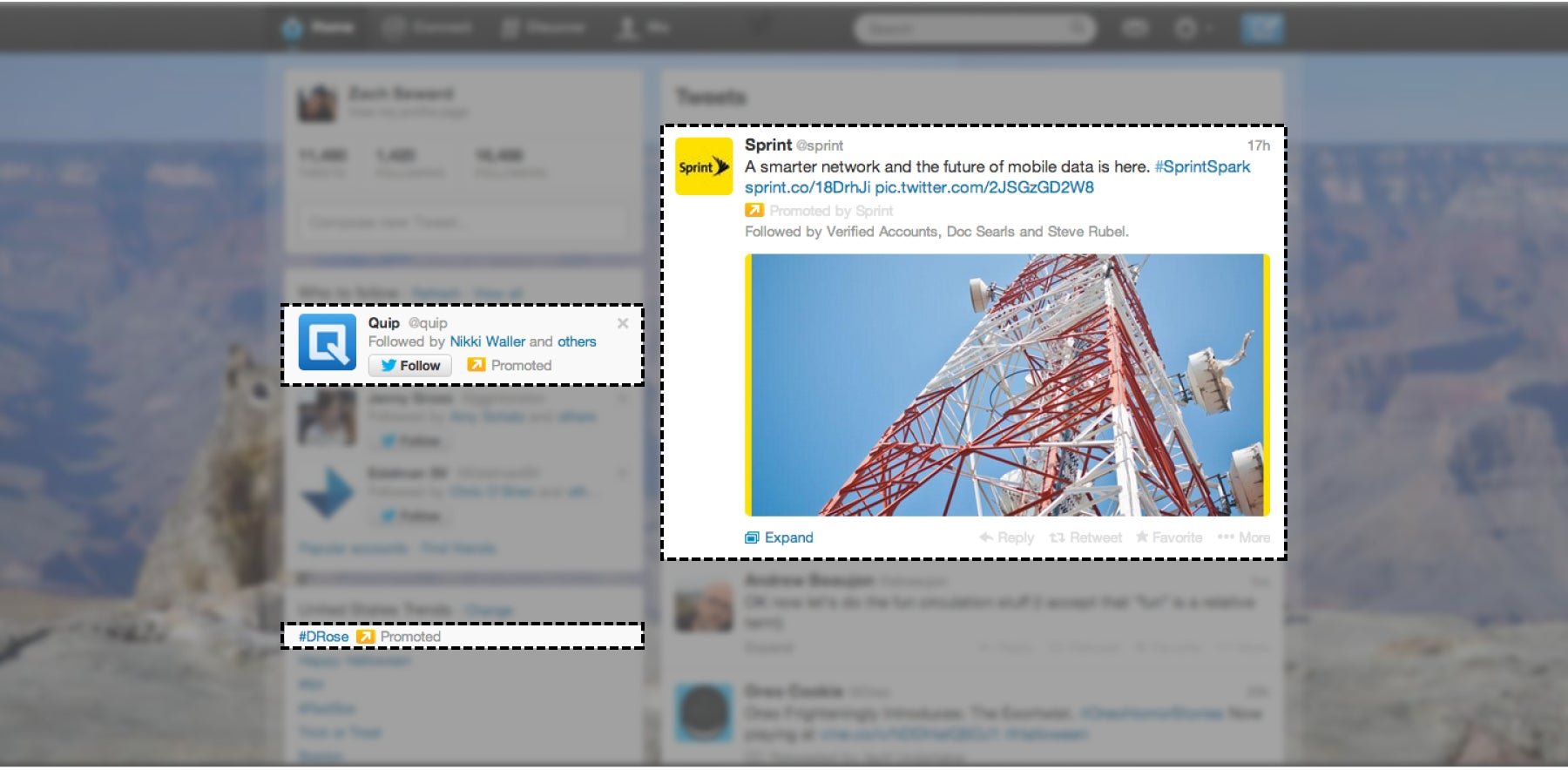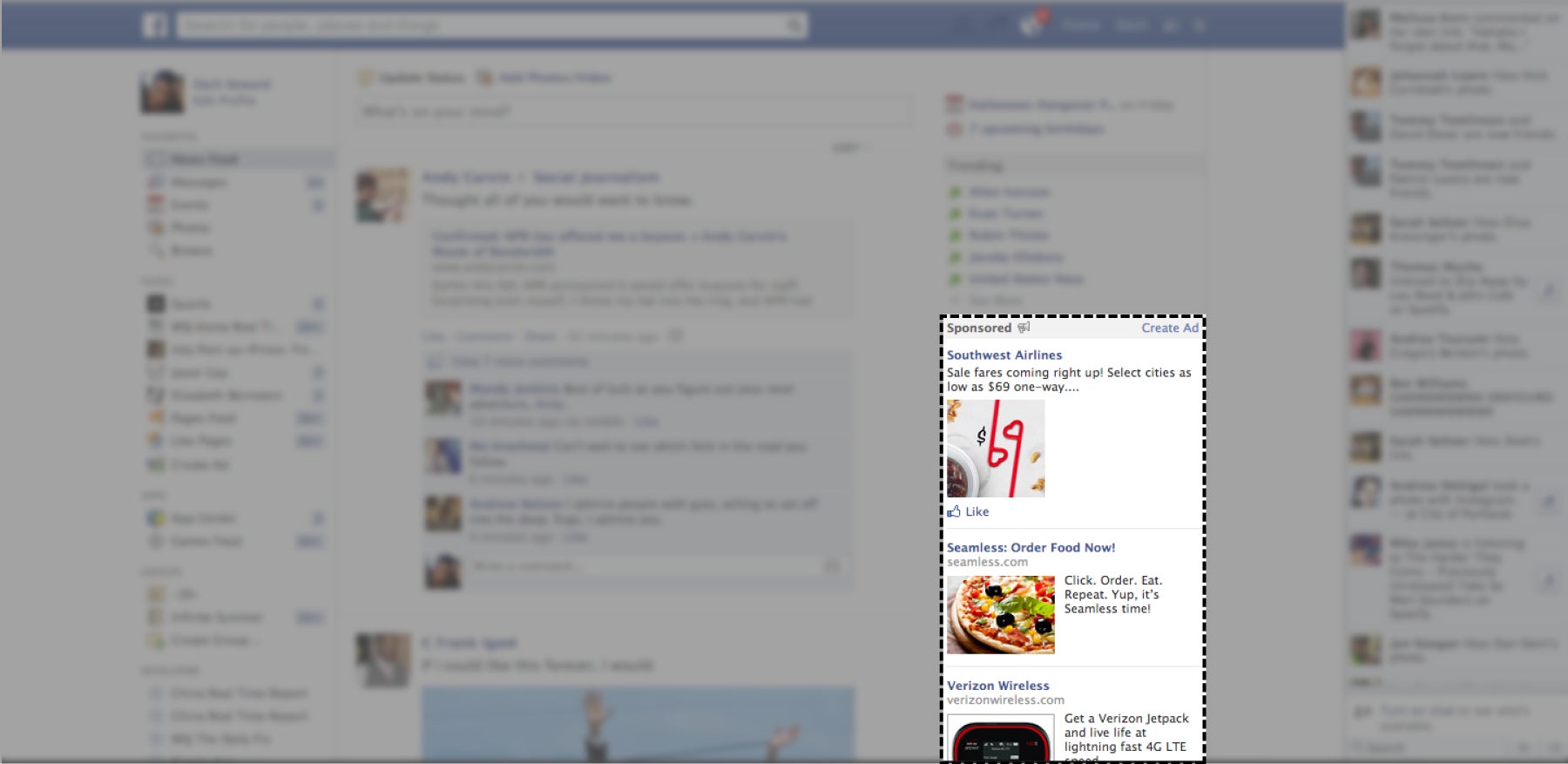And just like that, it feels as if Twitter has more ads than Facebook
It feels like Twitter and Facebook have switched places all of a sudden.

It feels like Twitter and Facebook have switched places all of a sudden.
When I opened up Twitter this morning, I was greeted with an ad from Sprint at the top of my timeline, including a large image displayed by default. That’s a recent change for Twitter, which previously hid images until you clicked on the tweet. Suddenly, Twitter feels much more visual but also advertising-heavy.

Facebook, on the other hand, didn’t happen to display an ad at the top of my newsfeed when I first visited the site today. (There were some lower down in my feed after scrolling for a while.) The only visible advertising upon loading the page was in the right column, much less obtrusive, though also presumably less effective, than what Twitter displayed.

In sum, 25% of the visible screen space on Twitter was occupied by advertising, compared with just 10% on Facebook. That’s a surprising role-reversal, even if it’s just one man’s experience on a random Thursday morning.

Of course, this isn’t a totally fair comparison. Facebook generates more advertising revenue per user than Twitter, which probably means that Facebook users see more ads than Twitter users. In general, using Facebook still feels like swimming in a sea of advertising in a way that Twitter doesn’t yet.
“Yet” is the key word, though. As Twitter prepares to go public, it’s working on ways to continue its rapid growth in advertising revenue. That will likely include showing users more ads, and with the new image-heavy design, those ads will undoubtedly seem more intrusive than plain-text tweets. “Increasingly, that 140 character message has become a caption to a much richer canvas,” Twitter CEO Dick Costolo is telling investors during the company’s road-show meetings.
Facebook, meanwhile, said yesterday it will not increase the number of ads that users see in their newsfeeds. That may be a reaction to data suggesting the company is testing the limits of its users’ tolerance for advertising.